Surgical and procedure lights are critical components in healthcare facilities, providing essential illumination during medical procedures, surgeries, and examinations. Proper usage and maintenance of these lights are crucial to ensure optimal performance, extend their lifespan, and maintain a safe and sterile environment. In this article, we will provide useful tips for the proper usage and maintenance of surgical and procedure lights.
Proper Usage of Surgical and Procedure Lights
-
Understand the Light's Features and Controls
Familiarize yourself with the features and controls of the surgical and procedure light. Read the manufacturer's instructions and operating manuals to understand the various settings, adjustability options, and safety precautions. Ensure proper training for the staff who will be using the lights.
-
Position the Light for Optimal Illumination
Position the light to achieve optimal illumination for the specific procedure or examination. Consider factors such as the size and depth of the surgical field, the patient's position, and the surgeon's line of sight. Adjust the light's angle, height, and orientation as needed to minimize shadows and provide clear visualization.
-
Adjust the Light Intensity and Focus as Needed
Properly adjust the light intensity and focus to meet the requirements of each procedure. Ensure that the light intensity is neither too bright nor too dim, providing adequate illumination without causing discomfort or glare. Adjust the focus and spot size to achieve optimal visibility of the surgical field or examination area.
-
Ensure Proper Sterilization and Infection Control
Follow proper sterilization and infection control protocols when using surgical and procedure lights. Clean and disinfect the lights according to the manufacturer's guidelines and facility policies. Ensure that any removable components are sterilized or replaced as required. Use appropriate covers or barriers to prevent contamination of the light during procedures.
4 Maintenance Tips for Surgical and Procedure Lights
-
Regular Cleaning and Disinfection
Regularly clean and disinfect the surgical and procedure lights to maintain a sterile environment. Use mild cleaning agents recommended by the manufacturer to clean the light's surfaces, handles, and controls. Pay special attention to areas that come into contact with medical staff or patients. Follow proper disinfection procedures to prevent the spread of infections.
-
Inspect and Replace Bulbs Regularly
Inspect the bulbs of surgical and procedure lights regularly and replace them as needed. Dim or flickering bulbs can impact the quality of illumination and compromise visibility during procedures. Follow the manufacturer's guidelines for bulb replacement, ensuring that the bulbs are compatible with the light model.
-
Check and Maintain Electrical Connections
Regularly check the electrical connections of the lights to ensure proper functioning and safety. Inspect the power cords, plugs, and sockets for any signs of damage or wear. Ensure that the lights are properly grounded and that the electrical connections are secure. If any issues are detected, consult a qualified electrician for repairs or replacements.
-
Schedule Professional Maintenance and Calibration
Schedule professional maintenance and calibration for surgical and procedure lights as recommended by the manufacturer. This may involve inspections, tests, and adjustments by trained technicians. Regular maintenance helps identify and address any potential issues before they affect the performance of the lights. Calibration ensures accurate light intensity and color temperature.
Importance of Proper Operation and Maintenance for Optimal Lighting Conditions in Medical Procedures
Proper operation and maintenance of lighting equipment play a crucial role in ensuring optimal lighting conditions during medical procedures. Adequate illumination is essential for accurate visualization, precise surgical techniques, and overall patient safety. By following best practices in operation and maintenance, healthcare facilities can optimize lighting conditions and enhance the effectiveness of medical procedures. In this article, we will highlight the importance of proper operation and maintenance for achieving optimal lighting conditions in medical procedures.
Optimal lighting conditions in medical procedures are crucial for healthcare professionals to accurately visualize anatomical structures, perform precise surgical techniques, and ensure patient safety and comfort. Proper operation and maintenance of lighting equipment significantly contribute to achieving and maintaining these conditions throughout the life cycle of the equipment.
-
Accuracy in Visual Perception
Proper lighting conditions enable healthcare professionals to accurately perceive visual information during medical procedures. The right amount and quality of light are essential for clear visibility of anatomical structures, tissues, and instruments. Adequate lighting helps in identifying subtle details, color differentiation, and tissue characterization, leading to accurate diagnoses and better patient outcomes.
-
Precision in Surgical Techniques
Well-maintained lighting equipment ensures precise illumination, allowing surgeons to perform intricate surgical techniques with enhanced precision. Proper lighting enables surgeons to differentiate between vital tissues, distinguish between different shades of color, and identify subtle anatomical landmarks. This precision contributes to improved surgical outcomes and reduced risks during procedures.
-
Patient Safety and Comfort
Optimal lighting conditions contribute to patient safety and comfort during medical procedures. Clear visibility provided by well-operated lights ensures that healthcare professionals can work with precision, minimizing the chances of errors and complications. Additionally, proper lighting conditions create a comfortable and reassuring environment for patients, reducing anxiety and promoting a positive patient experience.
-
Prolonging the Lifespan of Lighting Equipment
Regular maintenance and proper operation of lighting equipment contribute to its longevity and performance. By following recommended maintenance schedules, such as cleaning, inspections, and bulb replacements, healthcare facilities can prolong the lifespan of their lighting equipment. This reduces the frequency of replacements and associated costs while ensuring consistent and reliable lighting conditions.
-
Minimizing Eye Strain and Fatigue
Proper operation and maintenance of lighting equipment help minimize eye strain and fatigue among healthcare professionals. Inadequate lighting, such as flickering or dim lights, can cause eye strain and affect visual acuity. By ensuring consistent and reliable lighting conditions, healthcare professionals can work comfortably and maintain focus throughout lengthy procedures, reducing the risk of errors and fatigue-related complications.
-
Compliance with Regulatory Standards
Proper operation and maintenance of lighting equipment are essential for compliance with regulatory standards and guidelines in healthcare facilities. Regulatory bodies often have specific requirements regarding lighting conditions in different medical areas. By adhering to these standards, healthcare facilities ensure patient safety, maintain accreditation, and demonstrate a commitment to quality care.
3 Main Tips for Cleaning and Disinfecting Light Components
Understanding the Importance of Cleaning Light Components
Before delving into the cleaning and disinfection process, it's essential to understand why it's crucial to focus on light components. Light fixtures, bulbs, and related components are often overlooked when it comes to cleaning protocols. However, these components can harbor dust, dirt, and even harmful pathogens, compromising the overall cleanliness and sterility of the environment. By paying attention to the cleaning and disinfection of light components, you can ensure a truly sterile environment.
Preparing for the Cleaning Process
Gather the necessary supplies:
- Soft microfiber cloths
- Mild detergent or cleaning solution
- Disinfectant spray or wipes
- Disposable gloves
- Ladder or step stool (if needed)
Turn off the lights:
- Before starting the cleaning process, make sure to turn off the lights and allow the bulbs to cool down to prevent any accidents or injuries.
Cleaning Light Fixtures
Dusting the fixtures:
- Start by using a soft microfiber cloth to gently remove any visible dust or debris from the surface of the light fixtures. Avoid using abrasive materials that could scratch or damage the fixtures.
Removing light covers or shades:
- If applicable, carefully remove the light covers or shades according to the manufacturer's instructions. These components can often accumulate dust and should be cleaned separately.
Cleaning light covers or shades:
- Fill a basin or sink with warm water and a mild detergent or cleaning solution. Submerge the light covers or shades and use a soft cloth or sponge to clean them thoroughly. Rinse with clean water and allow them to air dry before reattaching.
Cleaning the fixtures:
- Dampen a soft microfiber cloth with a mild detergent or cleaning solution. Gently wipe down the fixtures, paying attention to any intricate details or hard-to-reach areas. Avoid excessive moisture that could damage electrical components.
Drying the fixtures:
- After cleaning, use a dry microfiber cloth to remove any excess moisture from the fixtures. Ensure that all components are completely dry before turning the lights back on.
Disinfecting Light Components
Choosing the right disinfectant:
- Select a disinfectant that is effective against a wide range of pathogens, including bacteria, viruses, and fungi. Ensure that it is safe for use on electrical components.
Applying the disinfectant:
- Follow the manufacturer's instructions and apply the disinfectant to a clean cloth or wipe. Gently wipe down the light components, focusing on frequently touched areas such as switches and handles.
Allowing sufficient contact time:
- To ensure proper disinfection, it is crucial to allow the disinfectant to remain on the surfaces for the recommended contact time. This allows the disinfectant to effectively eliminate any pathogens present.
Wiping off excess disinfectant:
- After the recommended contact time, use a clean, dry cloth to wipe off any excess disinfectant from the light components. Ensure that all surfaces are dry before turning the lights back on.
Importance of Proper Light Positioning
Proper light positioning serves two primary purposes: minimizing shadows and providing adequate illumination. Shadows can be distracting, create uneven lighting, and even compromise safety in certain situations. By positioning lights effectively, shadows can be minimized or eliminated, creating a more balanced and visually pleasing environment. Additionally, proper illumination ensures that the space is well-lit, allowing for better visibility and reducing eye strain.
Best Practices for Positioning Lights
-
Determine the Purpose of Lighting
Before positioning lights, it is essential to determine the purpose of the lighting in the specific area. Different spaces require different lighting requirements. For example, task lighting in a kitchen may focus on providing bright, focused light on countertops, while ambient lighting in a living room may aim for a softer, more diffused glow.
-
Consider Natural Light Sources
Take into account the natural light sources in the area when positioning lights. Natural light can complement artificial lighting and reduce the need for excessive artificial illumination during the day. Position lights in areas where natural light may not reach adequately, such as corners or darker spaces.
-
Utilize Multiple Light Sources
Using multiple light sources can help create a well-balanced and even illumination throughout the space. Consider incorporating a combination of ambient, task, and accent lighting to achieve the desired lighting effect. This approach not only minimizes shadows but also adds depth and visual interest to the environment.
-
Angle the Lights Properly
The angle at which lights are positioned can significantly affect the lighting outcome. To minimize shadows, aim to position lights at a 30 to 45-degree angle from the subject or the area being illuminated. This angle helps to reduce harsh shadows while providing adequate light coverage.
-
Pay Attention to Ceiling Height
The height of the ceiling should also be taken into account when positioning lights. Higher ceilings may require lights with a more focused beam angle to ensure sufficient illumination. On the other hand, lower ceilings may benefit from lights with a wider beam angle to distribute light more evenly.
-
Experiment and Adjust
Light positioning is not a one-size-fits-all approach. It often requires experimentation and adjustments to achieve the desired lighting effect. Take the time to test different positions and angles, observing the resulting lighting conditions and making necessary changes to optimize illumination and shadow reduction.
-
Regularly Maintain and Clean Lights
Even with proper positioning, lights can accumulate dust and debris over time, affecting their performance. Regularly clean and maintain light fixtures to ensure they continue to provide optimal illumination and minimize shadows. Follow manufacturer guidelines for cleaning and maintenance to avoid damaging the lights
Proper usage and maintenance of surgical and procedure lights are vital for healthcare facilities to ensure optimal performance, extend their lifespan, and maintain a safe and sterile environment. When using these lights, it is important to understand their features and controls, position them for optimal illumination, adjust the light intensity and focus as needed, and adhere to proper sterilization and infection control protocols. Regular maintenance is also crucial, including regular cleaning and disinfection, bulb inspection and replacement, checking and maintaining electrical connections, and scheduling professional maintenance and calibration. By following these tips and guidelines, healthcare facilities can ensure that the surgical and procedure lights operate at their best, providing accurate visualization, minimizing eye strain, and contributing to successful medical procedures and examinations.





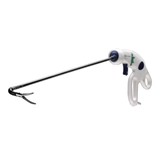
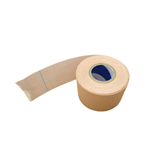
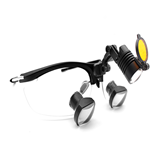


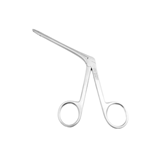
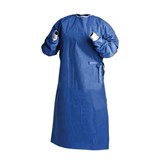
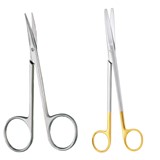
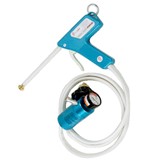
%20(1)-160x160-state_article-rel-cat.png)



